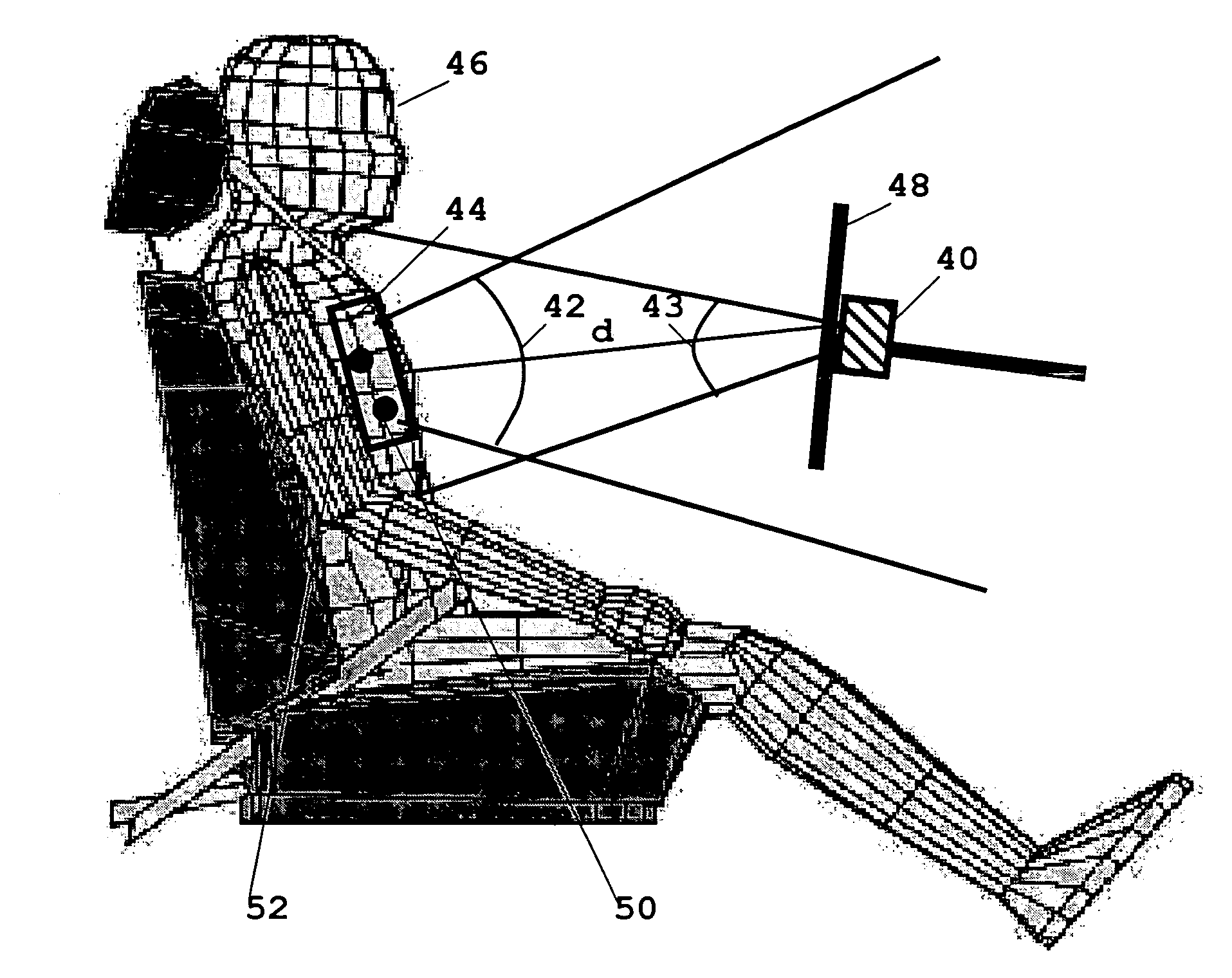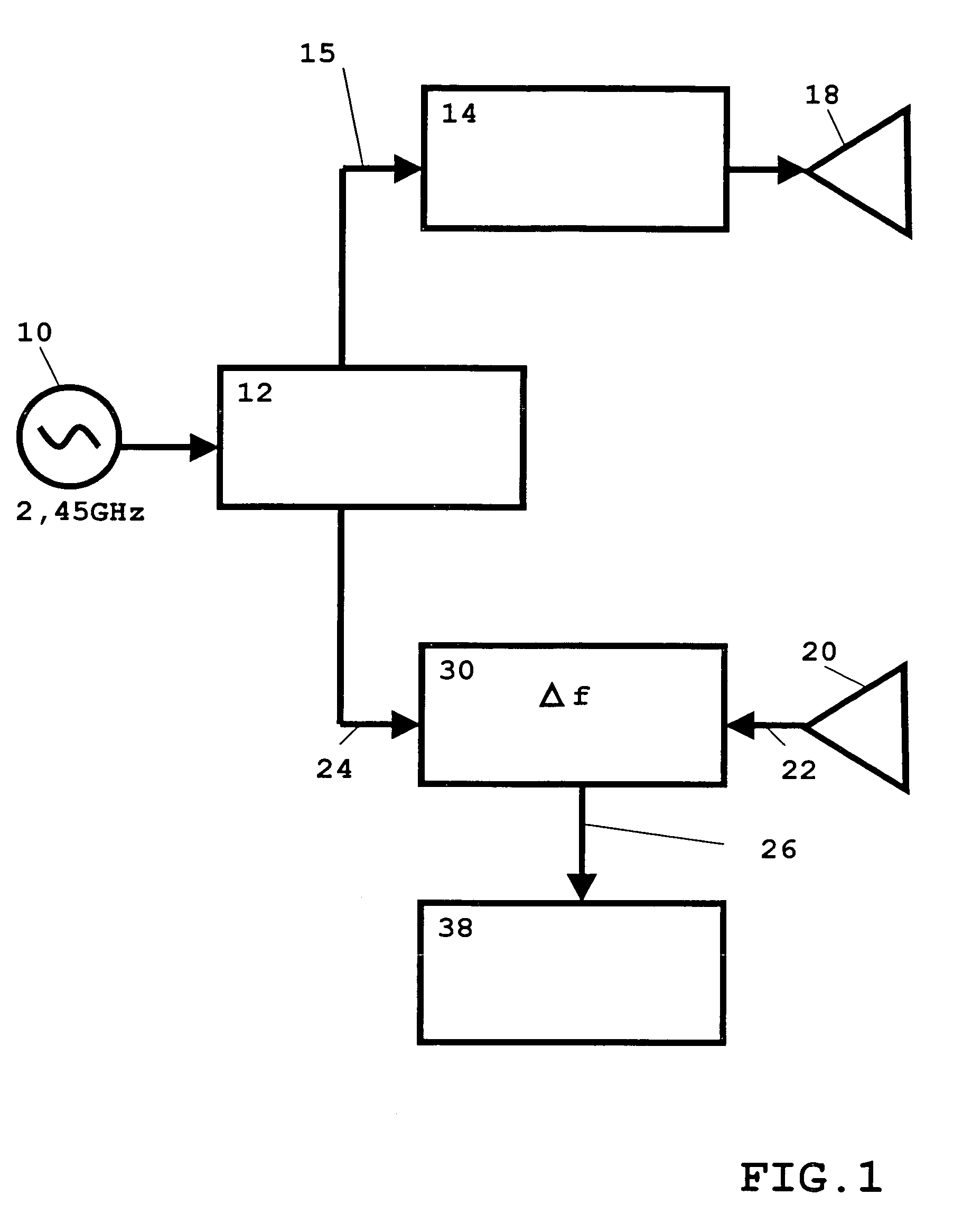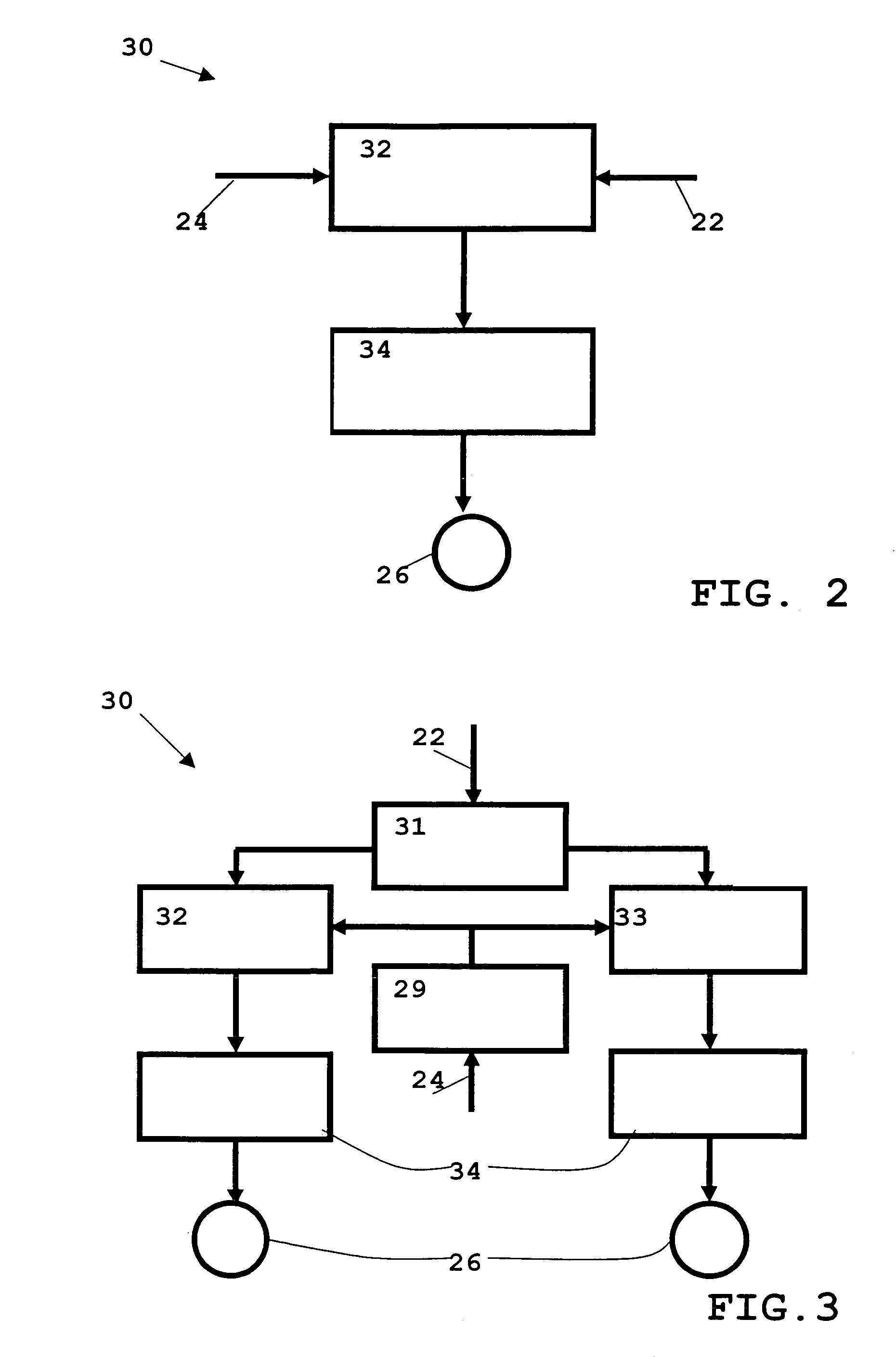Radar-assisted sensing of the position and/or movement of the body or inside the body of living beings
a technology of assisted sensing and living beings, applied in the direction of instruments, lock applications, pedestrian/occupant safety arrangements, etc., can solve the problems of large amount of evaluation logic, difficult image evaluation, and higher cos
- Summary
- Abstract
- Description
- Claims
- Application Information
AI Technical Summary
Benefits of technology
Problems solved by technology
Method used
Image
Examples
Embodiment Construction
[0031]In the figures, the same reference numerals label components that are the same or that have the same function.
[0032]FIG. 1 shows a block diagram of the configuration of a system for sensing according to the method, according to the invention, in the embodiment of a continuous wave (CW) radar. With continuous wave radar, continuous—instead of pulsed—electromagnetic waves are used in the radar frequency range.
[0033]A high-frequency, continuous useful signal in the GHz range having a frequency, e.g., of 2.45 GHz and average power of approximately 1 mW is conducted from a frequency generator 10, type VCO, to a 3 dB power divider 12. The signal is split into a transmit signal 15 and a reference signal 24 in a 1:1 ratio. Transmit signal 15 travels via a band pass filter 14, which filters out all frequencies outside the ISM band (2.45 GHz+ / −50 MHz), to radar transmit antenna 18. From there, a continuous electromagnetic wave is emitted in the direction of the area of the body site to ...
PUM
 Login to View More
Login to View More Abstract
Description
Claims
Application Information
 Login to View More
Login to View More - R&D
- Intellectual Property
- Life Sciences
- Materials
- Tech Scout
- Unparalleled Data Quality
- Higher Quality Content
- 60% Fewer Hallucinations
Browse by: Latest US Patents, China's latest patents, Technical Efficacy Thesaurus, Application Domain, Technology Topic, Popular Technical Reports.
© 2025 PatSnap. All rights reserved.Legal|Privacy policy|Modern Slavery Act Transparency Statement|Sitemap|About US| Contact US: help@patsnap.com



